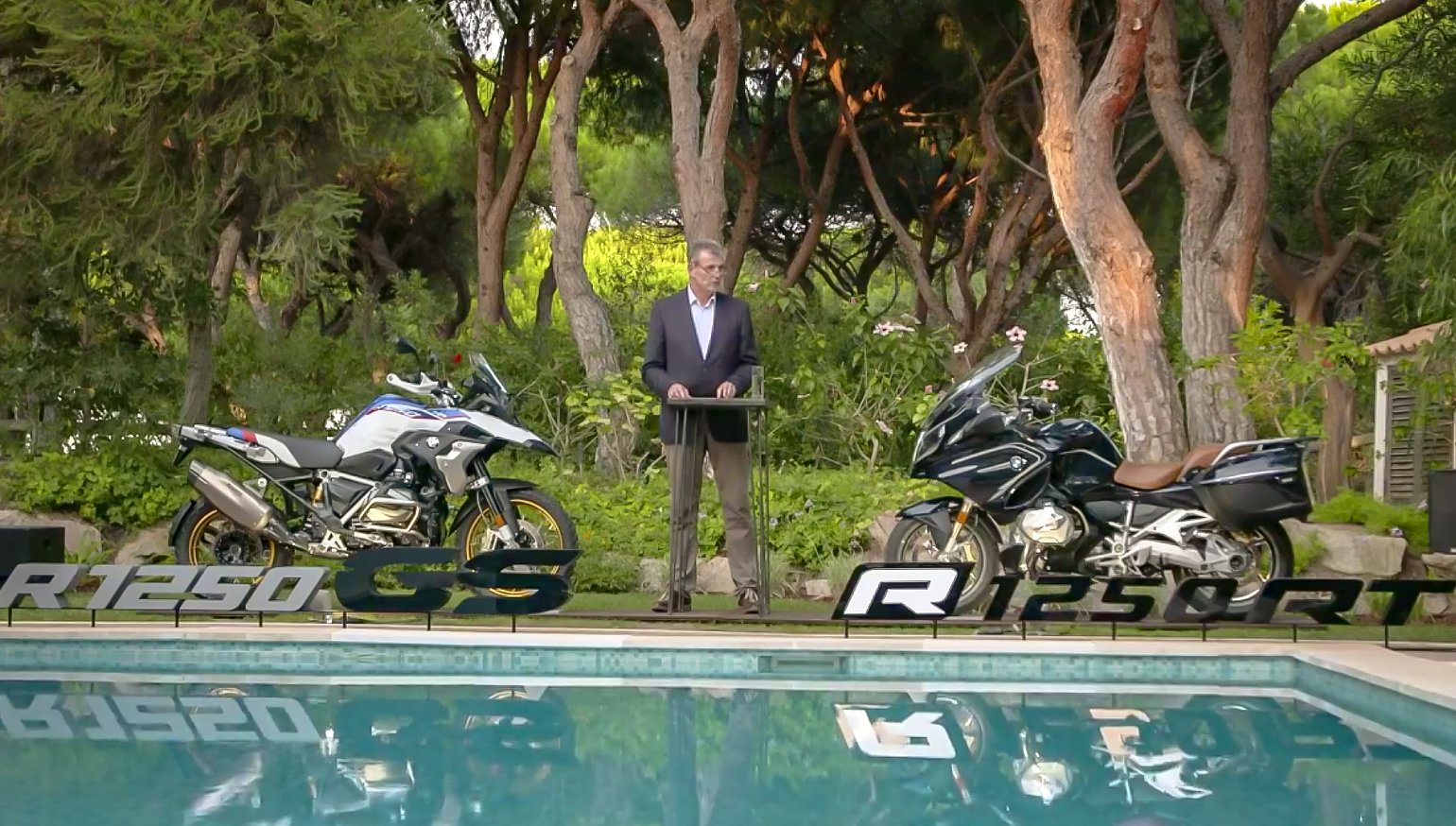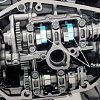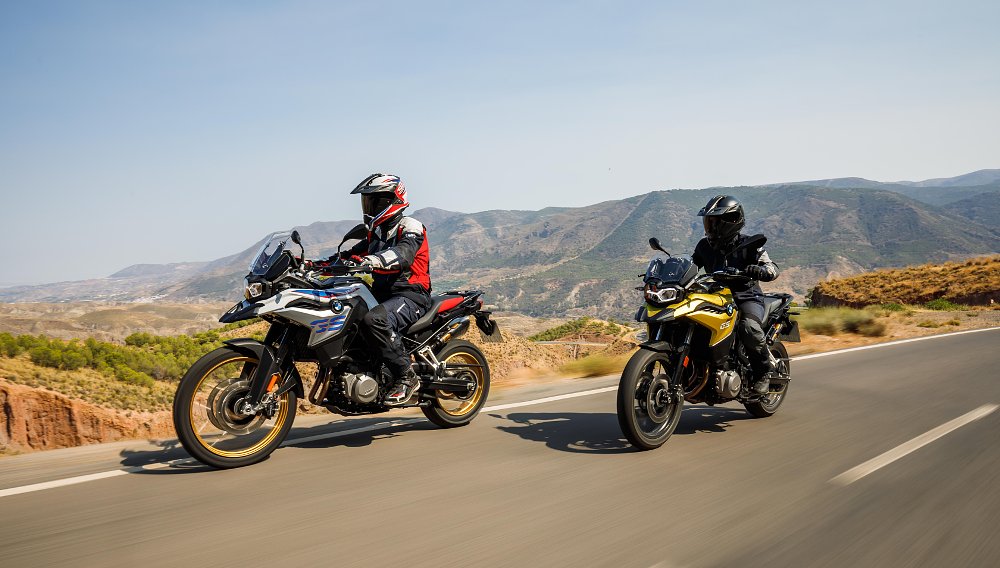There have been rumors of a new R 1250 GS floating around the internet since mid-August when Bennetts in the UK wrote an article claiming concrete evidence of the new model. Today, BMW solidified those claims with the official announcement of the new R 1250 GS and R 1250 RT.
The announcement was made in Portugal by Dr. Markus Schramm, President of BMW Motorad, as he addressed the international press as well as the rest of the world live on Facebook. As Dr. Schramm spoke, it became clear that the main focal point of both models is the new engine, which features a variable valve control system that BMW refers to as the BMW Shift Cam system.
Variable valve timing is nothing new. From Honda’s VTEC system to Ducati’s DVT, or Desmodromic Variable Timing, this technology has been around for a while. But this is the first time we are seeing a form of variable valve control introduced from BMW.
Schramm acknowledged that the main benefit of the BMW Shift Cam system is that it allows the Bavarian manufacturer to meet increasingly strict European emission requirements while simultaneously increasing power output on their flagship boxer models. BMW created the video embedded in this article to better explain exactly how their system works.
The BMW Shift Cam system gets its name because the intake cam literally shifts its position to adjust valve lift. The position is controlled via a Shift Gate, which now sits at the end of the intake cam.

Looking at the Shift Gate, there are two very distinct tracks that are controlled by what looks to be a small dowel or pin. There are also two different cam profiles per each of the two intake valves. At lower throttle inputs, a dowel shifts the entire camshaft toward the rear of the engine, activating the “partial load cams.”

The partial load cams feature reduced valve lift and limit the amount of fuel/air mixture at lower engine rpms. From what I can infer from the shots of the dash and tachometer, it looks like below 5,000 rpm the partial load cam is in charge.

Once the rider opens the throttle completely, and the engine spins past the 5,000 rpm mark, a separate dowel in the Shift Gate is activated to switch tracks. This secondary track pulls the entire camshaft towards the front of the motorcycle and switches fueling over to the “full load cams.” The full load cams feature maximum valve lift for increased power at higher engine speeds.
BMW claims an increase in power output to 136 horsepower and 105 foot-pounds of torque, up from 125 horsepower and 92 foot-pounds of torque. Power output is increased while fuel consumption is decreased by four percent, as is the overall emissions output.

My biggest concern with this new system is regarding the transition of power from the partial load cams to the full load cams. Anyone who has ever ridden one of the early VTEC systems on the Honda VFR800s can recall the abrupt nature with which the power kicked in when the V-four switched from two valves per cylinder to four. Also, more complex systems usually have a tendency to increase maintenance costs as well as overall complexity — i.e., things that can break.
In addition to the new engine, Schramm also mentioned that the new suspension on the R 1250 RT now features fully automatic load compensation. So if pushing a button to select between electronic suspension settings on the previous version was too much responsibility for you, it sounds like now the bike will bear that burden.

Having previously used BMW’s semi-active suspension, I found it to be a pretty damn good system. However, I did find that I needed to cheat the preload selection a little bit by selecting the “rider plus luggage” icon to get it to pair correctly to my weight. I am interested to see exactly how this new system compares.
It sounds like a slew of international press riders from Germany, Austria, Switzerland, the Netherlands, Belgium, and the UK will be heading out tomorrow to actually ride these new bikes. As I didn’t hear any mention of representatives from the United States in attendance, anyone like myself interested in learning more about how these features actually perform will have to rely on Google translate to get the message across. That, or just keep up with the English-speaking UK rags.































 Riders Preferred Membership
Riders Preferred Membership










